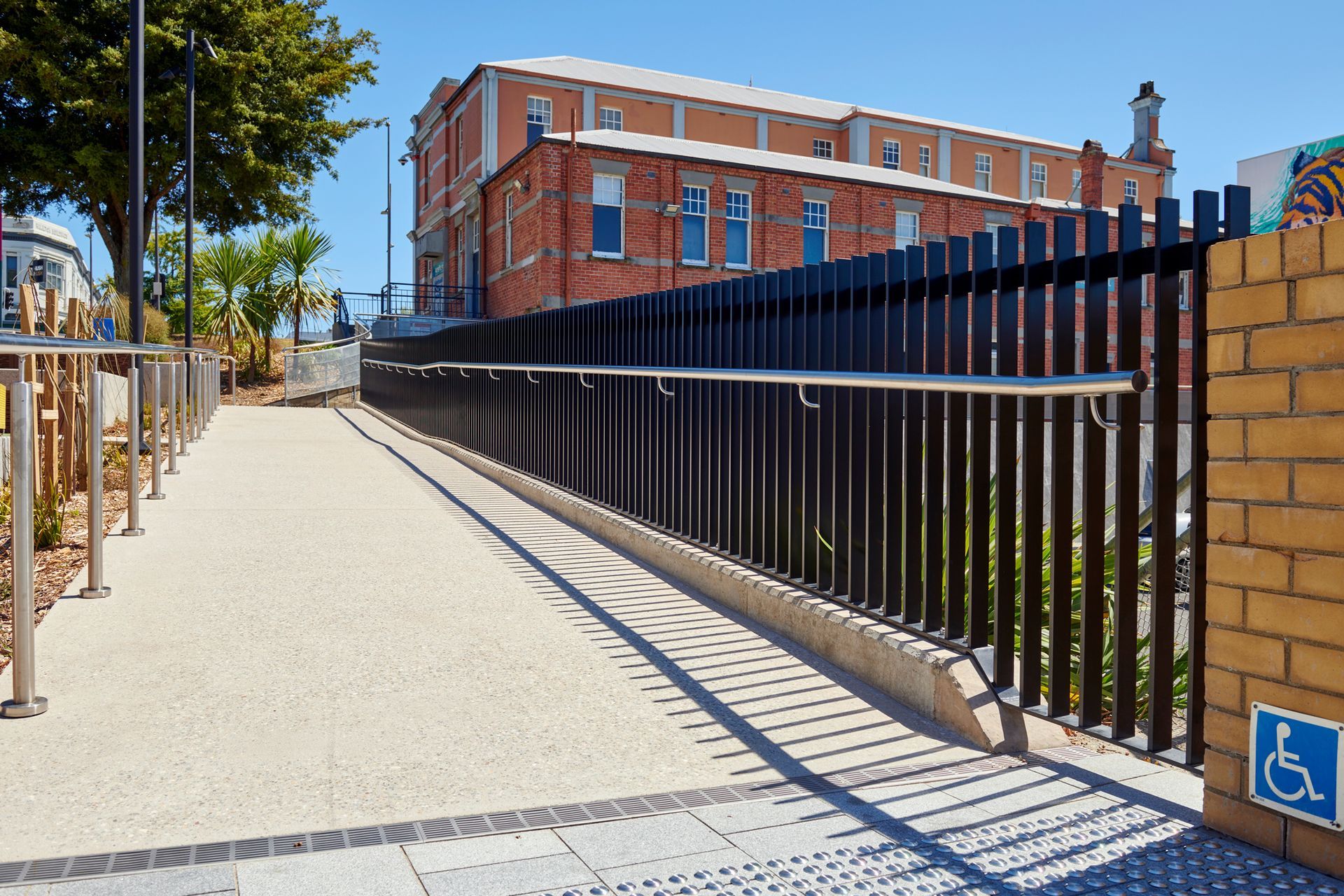How to select balustrades for public spaces
Written by
25 March 2025
•
4 min read

At their core, balustrades offer essential fall protection and guidance for pedestrians, ensuring safety in elevated areas, stairways, and open spaces. Beyond their functional role, they help define spaces, direct foot traffic, and enhance the architectural character of a project.
Here, we speak to UNEX Residential Business Development Manager Ben Thomas who shares how to select well-designed balustrades that contribute to the beauty and safety of public spaces.




Safety requirements for balustrades in public spaces
In New Zealand, balustrades in public spaces must comply with the New Zealand Building Code (NZBC) to ensure they provide the necessary strength, durability, and accessibility. The most relevant compliance requirements include:
- B1 (Structure): Balustrades must be designed to withstand high impact and crowd loadings, especially in spaces with significant foot traffic.
- B2 (Durability): Materials must remain durable for at least 50 years in structural applications and 15 years for components like fixings and coatings.
- D1 (Access Routes): Handrails and balustrades must be designed to accommodate all users, including those with mobility impairments.
- F4 (Safety from Falling): Balustrades must meet height and barrier strength requirements to prevent falls.
Public space balustrades must meet strict safety requirements and the compliance process can be tricky if you’re not an industry expert.
“UNEX offers pre-engineered balustrade solutions that simplify the compliance process,” shares Ben. “We have both pre-engineered PS1 Documentation avalable for download through our technical portal on unex.co.nz or you can request site specific design PS1.”
While safety is the priority, balustrades in public spaces should also contribute to the visual appeal of the environment. UNEX’s range of aluminium and glass balustrades is designed to offer robust performance while enhancing the architectural intent of a project.


Selecting the right materials for balustrades in public spaces
Framed glass balustrades provide unobstructed views, making them ideal for waterfronts, lookouts, and public plazas. In contrast, aluminium balustrades offer a contemporary, durable solution for harsh weather and heavy use, and custom screening solutions can add privacy, wind protection, or decorative elements that seamlessly integrate into public spaces.
Whichever materials best suit your application, it’s crucial to select the ones that will endure in the location and can withstand constant use with minimal maintenance, shares Ben.
“Aluminium is a preferred choice due to its corrosion resistance, strength, and ability to be powder-coated for additional protection. UNEX’s balustrade systems are designed for long-term performance, ensuring minimal upkeep while maintaining compliance with NZBC durability standards.”
Balustrades in public spaces must also be designed with inclusivity in mind. This means ensuring compliant handrail heights, using contrasting materials for visibility, and incorporating continuous handrails for those with mobility impairments.
“Compliance with the New Zealand Building Code (NZBC) and accessibility standards is paramount, and working with pre-engineered solutions or partnering with a balustrade specialist who can provide site-specific PS1 documentation ensures a seamless approval process.”


What to consider when selecting a balustrade for a public space
Whether incorporating sleek modern lines, traditional elements, or a unique, custom design, balustrades need to tick many boxes to both comply with safety requirements and to elevate the aesthetic of the space. Here are the key things to consider when specifying a balustrade design:
- Compliance: Does the system have pre-engineered PS1 documentation to streamline the approval process? “Partnering with a balustrade specialist who can provide site-specific PS1 documentation ensures a seamless approval process,” says Ben.
- Durability: Will the materials withstand heavy use, weather exposure, and environmental conditions?
- Aesthetics: Does the balustrade complement the surrounding architecture and urban landscape?
- Ease of installation: Does the system allow for efficient installation with minimal disruption to public areas?
- Load rating: Public spaces often require balustrades rated for C3 and C5 crowd loadings to meet the demands of high-traffic environments.
- A key consideration is compliance with New Zealand Building Code requirements, including F4 (Safety from Falling) and D1 (Access Routes), which dictate when and where handrails are required for accessibility.
Balustrades play a significant role in shaping the atmosphere and identity of a public space so it’s important to consider practical requirements as well as visual impact, shares Ben.
“They not only serve as safety features but can also become design focal points that can greatly enhance the overall aesthetic of the environment.”
Explore projects in public spaces featuring balustrades by UNEX